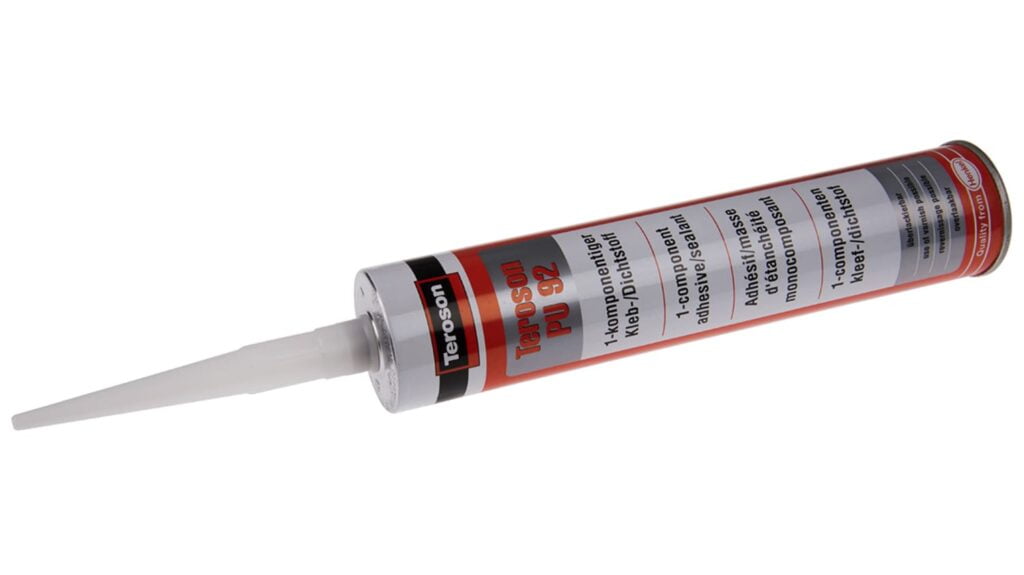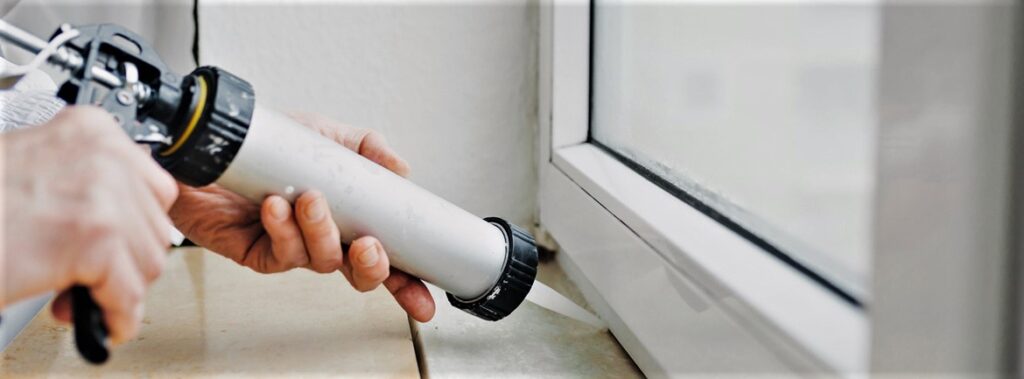Polyurethane Sealants are highly sought out consumable material used in plumbing, road repair, construction, and everywhere that needs a high-strength, durable, water-resistant, and highly effective seal.
But why is it so effective and highly used?
First, we must understand, sealants and how they work before tackling polyurethane sealants.
What is a Sealant?
Sealants are grouting and insulating material that fill up gaps and passage of fluids, and can both block and keep air, water, dust, or even sound and other components from going to joints of a structure or other material. These are materials with a great flexible ratio which can be further increased or decrease depending on the brand and specification.
Sealant has two types which are very popular and can be either silicone sealant or polyurethane sealant. and despite their similar characteristics, they have very distinct differences between them.
How long does a Sealant take to dry?
Generally speaking, most silicone-based sealant takes thirty minutes to one hour to dry but having a dry sealant does not mean that the seal is ready and complete. Before exposure to moisture, water, and fluid, a sealant must take at least 24 hours curing time for the chemical to fully incorporate itself in the area so it is recommended to have the sealant cured at least a day after application for full effect.
For polyurethane sealants, it is best recommended to at least wait 2-3 days for the sealant to fully cure since it will expand and process the chemical more thoroughly as compared with silicone-based sealant and it will act as a complete barrier in the joints it is placed.

What happens if Sealant gets wet before fully cured?
If the sealant gets wet before fully cured whether it is silicone-based or polyurethane, it will tend to detach itself from the area where it is applied. Moisture and water can get the sealant difficult to achieve proper adhesion to the surface and have the chemical compound it actually bond. In worse cases, it will result in bad investment as it will be unusable and a waste of good money since it is not properly used and install.
What are the Basic Differences between Silicone & Polyurethane Sealants?
The main and actual difference between silicone-based and polyurethane sealants is their chemical properties.
Polyurethane sealant is mostly an organic material that has properties such as hardness, adhesion strength, flexibility, durability, higher resistance to moisture and can be easily manipulated according to the area to be placed and need. Its mechanical, bond and adhesion strength are at a higher level compared to silicone-based which can be removed or possibly be removed in a long period of time.
Silicone-based sealant is an inorganic material. These type of sealant are easy to install, has a variety of use with its easy procedure and settlement and curing time yet they have lower adhesion strength compared to polyurethane sealant such as they are mostly used in repairing small areas or gaps which does not need high mechanical strength.
The main advantage of a silicone-based sealant as compared to polyurethane sealant is its resistance to sunlight and high UV light resistance. polyurethane sealant tends to lose and deteriorates its properties over time if being directly hit by UV light as compared with silicone sealant which maintains its properties over a long period of time and has a lesser chance of returning to its polymer form.

Polyurethane Adhesives and Sealants
Polyurethane adhesives and sealants create a strong and tight bonding that seals a variety of joints, gaps, and structures. This material provides the advantage of having an initial bond before fully curing in cases where you need the sealant to hold tightly on the spot even though it is not fully and completely cured. This method reduces the usage of clamping and holding materials which greatly lessen the cost and increase the construction and manufacturing flexibility. As polyurethane material is versatile, custom types of adhesive and sealants with a wide variety of chemical, bonding, and physical properties can be manufactured.
Polyurethane adhesives can be used in a lot of ways including the assembly of shoes, bags, and other accessories, automotive interiors and exteriors, glasses, windshield bonding, and even textile laminates. Conveyor belts are also usually closed and used with polyurethane sealants and binders. Fiberboard is also formed with the usage of wood chips or sawdust and polyurethane sealants.
But Polyurethane sealants are commonly known and used in road works and repair, plumbing works, construction works, and anywhere else a high-strength, the water-resistant seal is needed and valued.
Polyurethane sealants provide excellent stress-strain recovery to retain original shape after being pulled, bent, and formed with fast curing rates and even adherence to non-primed concrete. And also Polyurethane sealants can also be painted to match the surrounding surfaces with different types of paints while some bonding agents cannot be painted yet has basic colors such as white, gray, or even transparent.
Advantages and Disadvantages of Polyurethane Sealants
The main advantages of using polyurethane sealants are;
- Excellent wear, tear, and abrasion resistance.
- Fair chemical and weather resistance especially from the rainy or stormy season.
- Great as either a filling material or gapping material
- No need to minor need for clamping and holding material due to initial bonding strength
- Can be painted (on specific brands)
- Has a great waterproofing capabilities
- Usage in different joint and gaps sizes from small to large.
- Great adhesion compatibility with different construction materials such as steel, stones, wood, and concrete.
The main disadvantages of using polyurethane sealants are;
- Long Drying or Curing Process as it takes 24 hours to 2 days to be fully cured.
- Needs to be in a well-ventilated area for the chemical to fully process.
- Tends to shrink back to its polymer form if affected by sunlight in a long period of time
- Needs to be installed and cured correctly to last a long time
Installation of Polyurethane Sealant
Polyurethane sealants are packed in a plastic container with a nozzle that needed a caulking gun for it to be used. The area or surface in which the polyurethane sealant will be used must be structurally clean, dry (no frost), and structurally sound, free of contaminants, including, but not
limited to, dust, dirt, loose particles, tar, asphalt, rust, mill oil, etc. If the substrate is painted or coated, scrape away all loose and weakly bonded paint or coating.
Any paint or coating that cannot be removed must be tested to verify the adhesion of the sealant or to determine the appropriate surface preparation if needed.
To remove laitance and any other loose material, clean concrete, stone, or other masonry materials with non-alcoholic based solvent by washing, grinding, sandblasting or wire brushing as necessary. Do not use water to clean substrates. Dust must be thoroughly removed after cleaning. Alcohol is not compatible with polyurethanes and its use can cause irreparable damage to the sealant. If alcohol is used as a cleaning solvent, all traces of alcohol must thoroughly be removed prior to the installation of the polyurethane sealant. Lastly, alcohol is NOT recommended as a tooling medium.
After surface preparation, the polyurethane sealant can be applied and used but be sure to give 24 hours curing time after installation in which cases, it must not be wet, placed with fluid, or removed as it will affect the bonding of the polyurethane sealant.
Maintenance of polyurethane sealant is simple as replace the damaged portion by removing the old sealant completely, cleaning the surfaces, and reapplying a fresh and appropriate amount of new sealant.
To see others and know more about material construction, please see here.
To know other construction guides, tips, and methodology for beginners, veterans, and contractors, please see here.

